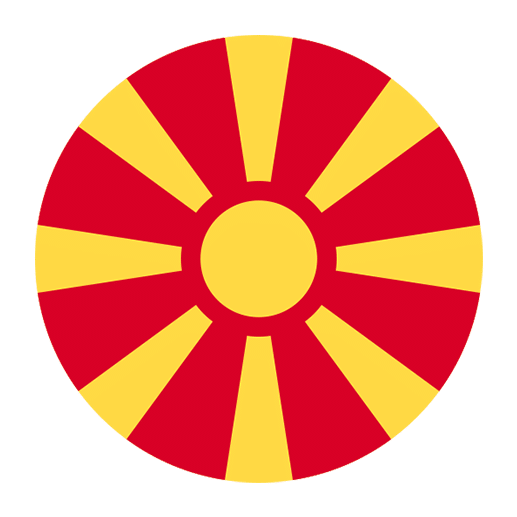The Slavic language family is a diverse and fascinating group of languages spoken by millions of people across Eastern Europe, the Balkans, and parts of Central Europe. Among these languages, Macedonian stands out as an intriguing member of the South Slavic subgroup. In this article, we will explore the unique characteristics of Macedonian and compare it to other Slavic languages, such as Bulgarian, Serbian, Croatian, and Russian. This comparative analysis will help language learners gain a deeper understanding of Macedonian and its place within the broader Slavic language family.
Historical and Geographical Context
Macedonian is an official language of North Macedonia, a country located in the Balkan Peninsula. It belongs to the South Slavic branch of the Slavic language family, which also includes Bulgarian, Serbian, Croatian, and Slovenian. The Slavic languages are generally divided into three main groups: East Slavic (e.g., Russian, Ukrainian, Belarusian), West Slavic (e.g., Polish, Czech, Slovak), and South Slavic.
The historical and geographical context of Macedonian has significantly influenced its development. The region’s complex history, marked by periods of Ottoman rule, Yugoslav federation, and national independence, has left its mark on the language. Additionally, the close proximity to other South Slavic-speaking regions has resulted in mutual influences between Macedonian and neighboring languages.
Phonological Features
One of the first aspects that language learners notice when comparing Macedonian to other Slavic languages is its phonology. While there are many similarities, there are also distinct differences that set Macedonian apart.
Vowel System
Macedonian has a relatively simple vowel system compared to other Slavic languages. It features five vowels: /a/, /e/, /i/, /o/, and /u/. This simplicity is reminiscent of the vowel systems found in Bulgarian and Serbian. In contrast, languages like Russian and Polish have more complex vowel systems with additional distinctions, such as the presence of reduced vowels in unstressed positions.
Consonant System
The consonant system of Macedonian is also noteworthy. One of the most distinctive features is the presence of the phonemes /ѓ/ and /ќ/, which are absent in most other Slavic languages. These sounds are pronounced as voiced and voiceless palatal stops, respectively. For example, the word “ѓавол” (devil) contains the /ѓ/ sound, while “ќош” (corner) contains the /ќ/ sound.
In comparison, Bulgarian lacks these particular palatal stops, though it shares many other consonantal features with Macedonian. Serbian and Croatian have a similar range of consonantal sounds, but they do not feature the specific /ѓ/ and /ќ/ phonemes.
Grammar and Syntax
Grammar and syntax are areas where Macedonian exhibits both commonalities and distinct features compared to other Slavic languages.
Definite Articles
One of the most striking grammatical features of Macedonian is the use of postposed definite articles. Unlike English, where the definite article “the” precedes the noun, Macedonian attaches the definite article to the end of the noun. For example, “куќа” (house) becomes “куќата” (the house) when definite. This feature is shared with Bulgarian, making it a unique characteristic among South Slavic languages.
In contrast, other Slavic languages, such as Serbian, Croatian, and Russian, do not use postposed definite articles. Instead, they rely on context or other grammatical constructions to convey definiteness.
Case System
Macedonian has significantly simplified its case system compared to many other Slavic languages. While Russian, Polish, and Czech, for example, have extensive case systems with six or seven cases, Macedonian has largely abandoned the use of cases in favor of a more analytical structure. The remaining vestiges of the case system are primarily found in pronouns and some fixed expressions.
Bulgarian has undergone a similar simplification, making it and Macedonian distinct within the Slavic family for their reduced reliance on cases. Serbian and Croatian, on the other hand, still retain a relatively robust case system.
Verb Conjugation and Aspect
Verb conjugation in Macedonian follows patterns similar to other Slavic languages, with verbs conjugated according to person, number, and tense. However, Macedonian verbs also exhibit a feature known as the “verbal aspect,” which is common across Slavic languages. Aspect in Macedonian, as in other Slavic languages, distinguishes between completed actions (perfective aspect) and ongoing or habitual actions (imperfective aspect).
While the concept of aspect is shared among Slavic languages, the specific conjugation patterns and usage can vary. For example, Russian and Polish have a more complex system of prefixes and suffixes to indicate aspect, whereas Macedonian and Bulgarian use a simpler system.
Vocabulary and Lexical Influences
Vocabulary is another area where Macedonian both aligns with and diverges from other Slavic languages. The historical and cultural interactions of the region have left a significant impact on the lexicon.
Common Slavic Roots
As with all Slavic languages, Macedonian shares a substantial number of common Slavic roots with its linguistic relatives. Words related to basic concepts, family, nature, and everyday activities often have cognates across Slavic languages. For example, the word for “mother” is “мајка” in Macedonian, “мать” (mat’) in Russian, “matka” in Polish, and “majka” in Serbian and Croatian.
Turkish and Greek Influences
Due to the Ottoman rule in the region, Macedonian has borrowed a significant number of words from Turkish. These loanwords often pertain to food, clothing, administration, and daily life. For example, the Macedonian word for “bread” is “леб,” which is derived from the Turkish “ekmek.”
Similarly, the historical interactions with Greek-speaking populations have led to the incorporation of Greek loanwords into Macedonian. Words related to religion, science, and culture often have Greek origins. For instance, the Macedonian word for “school” is “училиште,” which has its roots in the Greek “σχολείο” (scholeio).
Influence of Neighboring Languages
Given its geographical location, Macedonian has also been influenced by its neighboring languages, particularly Serbian, Croatian, and Bulgarian. This influence is most evident in the vocabulary related to modern life, technology, and popular culture. For example, the Macedonian word for “computer” is “компјутер,” which is similar to the Serbian and Croatian “računar” and the Bulgarian “компютър” (kompyutăr).
Writing System
The writing system of Macedonian is another distinctive feature that sets it apart from some other Slavic languages.
Cyrillic Alphabet
Macedonian uses the Cyrillic alphabet, which is also used by several other Slavic languages, including Russian, Bulgarian, and Serbian. However, the specific version of the Cyrillic alphabet used in Macedonian has some unique letters that are not found in the versions used by other languages. For example, the letters Ѓ (gj) and Ќ (kj) are unique to Macedonian and represent specific phonemes in the language.
In contrast, Croatian uses the Latin alphabet, which highlights one of the key differences between the South Slavic languages. Serbian is unique in that it uses both the Cyrillic and Latin alphabets interchangeably.
Dialects and Regional Variations
Like many languages, Macedonian has a range of dialects and regional variations. These dialects can exhibit significant differences in pronunciation, vocabulary, and even grammar.
Major Dialect Groups
Macedonian dialects are generally divided into three major groups: Northern, Western, and Eastern. Each of these groups has its own distinct features and sub-dialects.
– The Northern dialects are influenced by Serbian and Bulgarian and often exhibit features that are intermediate between these languages and standard Macedonian.
– The Western dialects are considered the basis for the standard Macedonian language. They are characterized by specific phonological and morphological features that distinguish them from other dialects.
– The Eastern dialects show significant influence from Bulgarian, particularly in terms of vocabulary and pronunciation.
Standardization
The standardization of Macedonian in the mid-20th century was a significant milestone in the development of the language. The standard language was based primarily on the Western dialects, particularly those spoken in the region of the city of Skopje. This standardization has helped to unify the language and provide a consistent framework for education, media, and official communication.
Cultural and Sociolinguistic Aspects
Understanding the cultural and sociolinguistic context of Macedonian is crucial for language learners. The language is not just a means of communication but also a key component of national identity and cultural heritage.
National Identity
For many speakers, the Macedonian language is a central aspect of their national identity. The codification and standardization of Macedonian in the mid-20th century were significant in affirming the distinctiveness of the Macedonian people and their language. This process was closely tied to the broader political and cultural movements in the region, particularly the formation of the Socialist Republic of Macedonia within the former Yugoslavia.
Language and Education
Education in Macedonian is a key component of the national education system in North Macedonia. The language is used as the medium of instruction in schools and universities, and there is a strong emphasis on promoting literacy and proficiency in the standard language. This focus on education has helped to maintain and strengthen the use of Macedonian among younger generations.
Media and Popular Culture
Macedonian is widely used in media and popular culture, including television, radio, newspapers, and online platforms. The language’s presence in these domains helps to reinforce its use and promote its development. Additionally, Macedonian literature, music, and film contribute to the rich cultural heritage of the language.
Challenges and Opportunities for Language Learners
For English-speaking language learners, Macedonian presents both challenges and opportunities. Understanding these can help learners develop effective strategies for mastering the language.
Challenges
– **Phonological Differences:** The phonological features of Macedonian, including its unique consonants and vowel system, can be challenging for English speakers to master. Pronunciation practice and exposure to spoken language are essential for overcoming these challenges.
– **Grammar and Syntax:** While Macedonian has a simplified case system compared to other Slavic languages, its use of postposed definite articles and verbal aspect can be unfamiliar to English speakers. Grammar exercises and immersion in authentic language use can help learners internalize these structures.
– **Vocabulary Acquisition:** The presence of loanwords from Turkish, Greek, and neighboring Slavic languages can make vocabulary acquisition complex. A systematic approach to learning vocabulary, including the use of flashcards and context-based learning, can be beneficial.
Opportunities
– **Cultural Insights:** Learning Macedonian provides a unique window into the rich cultural heritage of North Macedonia and the broader Balkan region. Language learners can gain insights into the history, traditions, and contemporary life of Macedonian speakers.
– **Language Similarities:** The shared features between Macedonian and other Slavic languages can be an advantage for learners who already have experience with another Slavic language. Recognizing common roots and grammatical structures can facilitate the learning process.
– **Resources and Community:** There are numerous resources available for learning Macedonian, including textbooks, online courses, language exchange programs, and cultural organizations. Engaging with the Macedonian-speaking community, both online and offline, can provide valuable practice and support.
Conclusion
Macedonian is a unique and fascinating member of the Slavic language family. Its distinct phonological features, simplified grammar, and rich cultural context make it an intriguing language for learners. By comparing Macedonian to other Slavic languages, we can appreciate its uniqueness and better understand its place within the broader linguistic landscape.
For language learners, mastering Macedonian offers the opportunity to engage with a vibrant cultural heritage and connect with speakers of the language. While there are challenges to overcome, the rewards of learning Macedonian are significant, providing both linguistic proficiency and a deeper appreciation of the diverse Slavic world.

